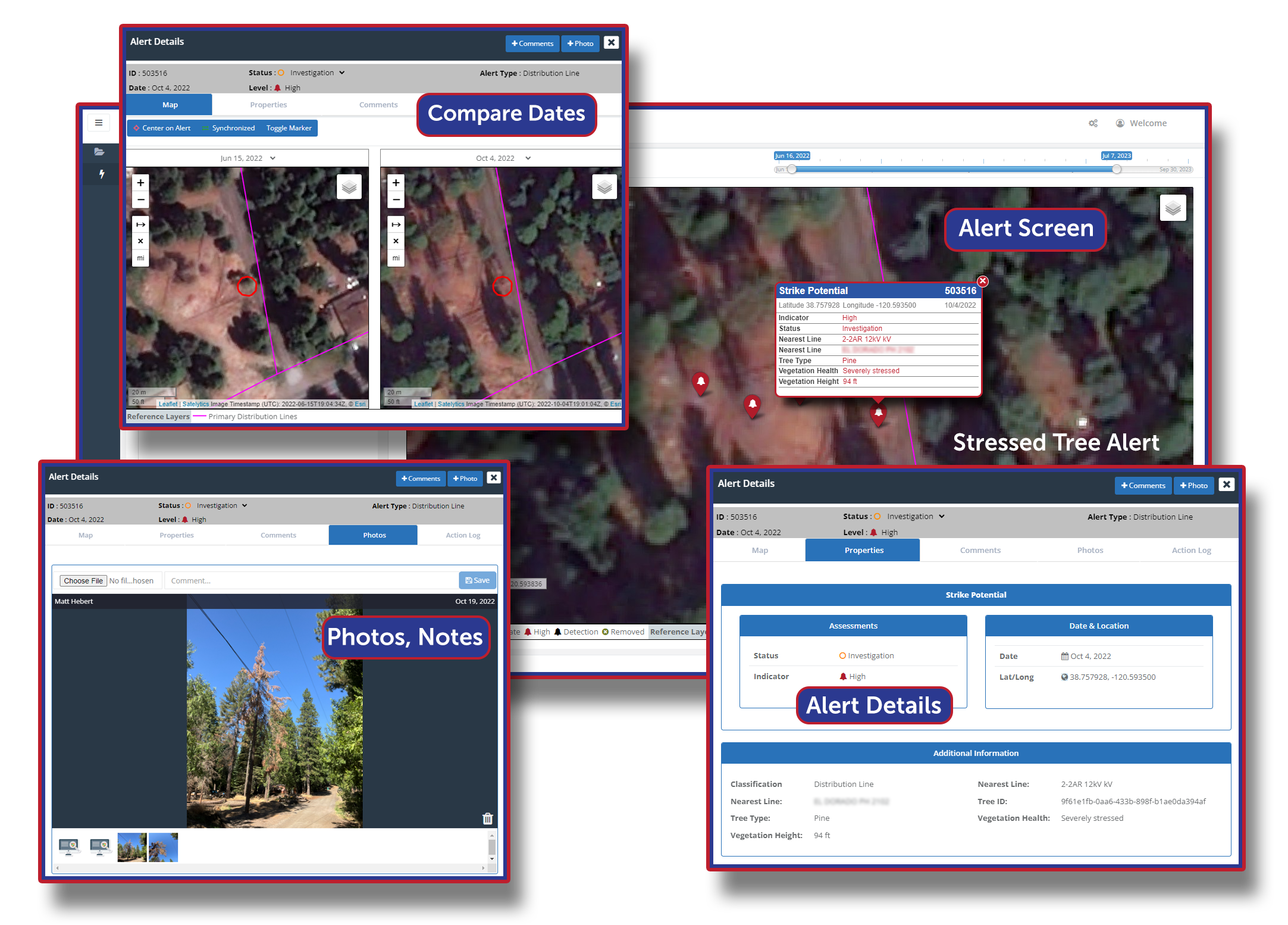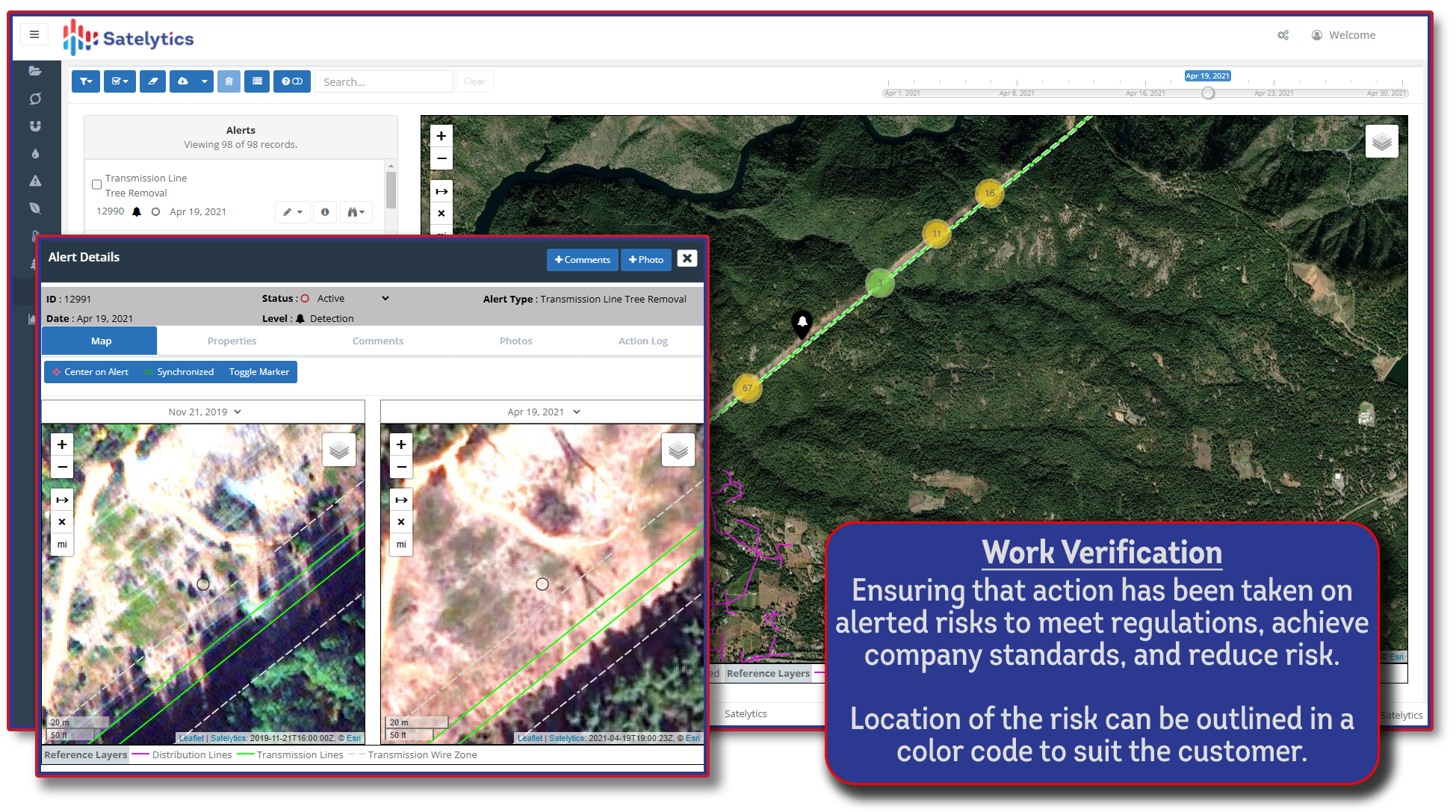
• Electric & Gas Utilities

• Electric & Gas Utilities
The numbers tell a stark story about utility vegetation management: while utilities collectively invest up to $8 billion annually in tree trimming and vegetation control, the Federal Energy Regulatory Commission (FERC) identifies vegetation as the leading driver of power outages. This paradox of massive spending coupled with persistent failures reveals a fundamental flaw in traditional vegetation management approaches.
Consider the economic reality facing utility vegetation managers. Power outages cost the U.S. economy $150 billion annually, with large commercial customers facing costs of $16,374 to $82,000 per hour of downtime. For industrial customers, the cost reaches $13.93 per kilowatt-hour. When 92% of all power outages trace their origins to vegetation management issues, the stakes become crystal clear: every missed tree, every delayed trim cycle, every oversight in the field translates directly into customer frustration and financial liability.
The traditional approach compounds these challenges. Vegetation management has grown from consuming 55% of overhead maintenance budgets in 2015 to 75% by 2020, making it the single largest operations and maintenance expense for most North American utilities. Yet despite this enormous investment, some regions still attribute 20% to 50% of their outages to vegetation. Large utilities routinely spend over $100 million annually on vegetation programs, with California utilities alone investing more than $1 billion per year, but the results consistently fall short of reliability expectations.
The challenge extends beyond pure dollars to human capital. The vegetation management workforce is hemorrhaging talent, with over 50% of workers voluntarily leaving their positions in the last five years. This labor shortage isn't merely inconvenient; it's financially devastating.
Certified arborists command $75 to $250 per hour, with experienced utility crews billing $150 to $175 per person per hour. A typical three-person crew costs $2,000 to $2,900 per day, not including equipment, transportation, and disposal fees. When these scarce resources are deployed on routine scouting missions rather than targeted interventions, the waste multiplies exponentially.
The traditional cycle-based approach exemplifies this inefficiency. Utilities typically trim feeders on four-year rotations regardless of actual risk levels. Research by the Power Systems Engineering Research Center shows that this one-size-fits-all approach wastes substantial resources, with some circuits requiring intervention after three years, while others can safely extend to five-year cycles. They calculated that even a modest optimization extending 20% of circuits from four to five years would save a utility spending $40 million annually approximately $1.6 million per year.
Satelytics addresses these challenges through data-driven precision that transforms how utilities deploy their expensive arborist expertise. Rather than sending crews on speculative scouting missions, satellite-based analytics identify specific trees, spans, or circuits requiring attention with up to 90% accuracy.
This precision delivers measurable financial returns. Data-driven vegetation management systems can reduce overall costs by 20% while cutting tree-caused unplanned outages by 30%. The reliability improvements are equally compelling. AI-powered vegetation management can improve SAIDI and SAIFI scores. A recent FirstEnergy analysis found that optimized vegetation management delivers SAIFI improvements of 8% to 11%, with greater gains during comprehensive programs.
The financial case strengthens when considering risk mitigation. Preventing even a single utility-caused wildfire can save hundreds of millions to billions in potential liabilities and fines. California's experience illustrates these stakes: equipment owned by the state's three largest utilities ignited more than 2,000 fires between 2014 and 2017, with 10% of California's wildfires resulting from utility ignitions. The potential liability from vegetation-related wildfires reaches into the billions of dollars.
Satellite analytics help utilities stay ahead of these risks by identifying declining trees before they display visible stress. The technology analyzes multispectral infrared bands to determine tree type, height, and health, enabling utilities to address problems proactively rather than reactively. This capability proves especially valuable during hot weather when power lines sag from thermal expansion and electrical load, potentially contacting vegetation that would otherwise remain safely distant.

Address problems proactively rather than reactively.
Traditional vegetation management suffers from a fundamental accountability gap. Utilities contract work, receive invoices, and hope the job was completed properly. Perhaps they conduct occasional spot checks, but comprehensive verification remains elusive and expensive.
Satellite-powered work verification closes this loop through automated before-and-after comparisons. Satelytics analyzes high-resolution imagery to compare strike potential before and after contracted work, automatically detecting changes in vegetation cover and height. This creates unprecedented accountability in contractor relationships while ensuring optimal deployment of expensive arborist resources.
The verification capability transforms contractor relationships from hope-based to performance-based. Utilities can tie payments directly to verified results, ensuring they pay only for work actually completed to specification. This approach reduces the risk of missed areas or subpar work that could lead to outages or safety hazards, while fostering accountability and excellence in contracted work.

Work verification improves vegetation management program performance.
The economic argument for satellite-powered vegetation management extends beyond theoretical savings to documented returns. Case studies demonstrate that AI analytics can deliver 74.1% return on investment in the first year. An initial $100,000 investment in data analytics returns $74,053 in savings, with the potential for even greater returns as systems mature and optimize over time.
These returns stem from multiple sources: reduced inspection costs through automated analysis, optimized trimming cycles that focus resources on actual rather than assumed risks, and prevented outages that would otherwise cost thousands of dollars per hour. The technology accomplishes in weeks what might take ground crews months or years, dramatically improving the efficiency of vegetation risk assessment. This comprehensive coverage ensures that high-risk trees don't slip through traditional inspection cycles.
Satelytics transforms traditional reactive approaches into proactive, data-driven operations:
Vegetation management costs continue rising while workforce availability declines. Utilities face a strategic choice: continue deploying scarce, expensive resources inefficiently, or leverage technology to optimize their most significant operations and maintenance expense.
The data strongly supports the satellite analytics approach. With a significant portion of outages traced to vegetation issues despite $8 billion in annual spending, traditional methods clearly aren't delivering proportional results. Satellite-plus-AI-powered systems offer a path to reduce costs by 20%, cut outages by 30%, and improve reliability scores by up to 67%—all while ensuring that expert arborists focus on trees that actually require their attention rather than fruitless scouting missions.
The choice becomes particularly compelling when considering the alternative: continuing to waste millions of dollars annually on inefficient inspection cycles while exposing utilities to hundreds of millions in wildfire liability and outage costs. In an industry where single incidents can generate billion-dollar consequences, satellite-powered vegetation intelligence isn't just an operational improvement; it's a strategic necessity for sustainable, reliable utility operations.
Ready to transform your vegetation management from uncertain to unbeatable? Contact Satelytics today to see how satellite-powered work verification and risk assessment can optimize your arborist deployment while dramatically improving your reliability metrics.